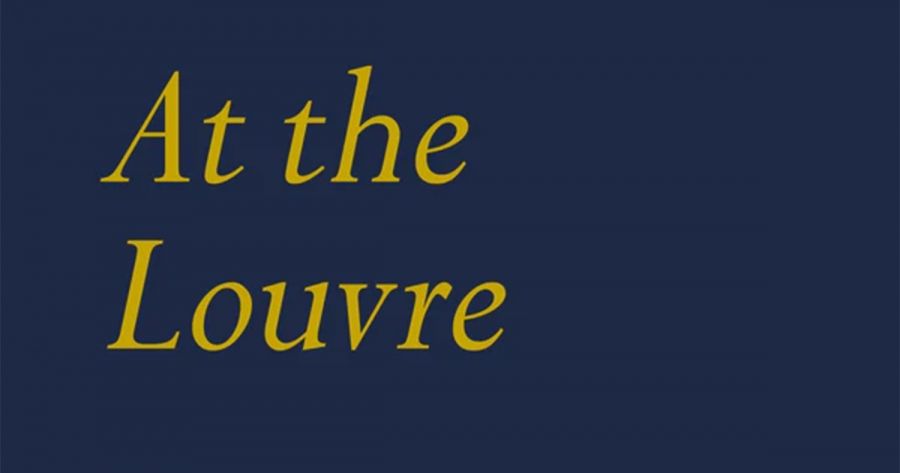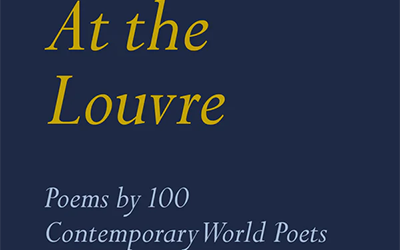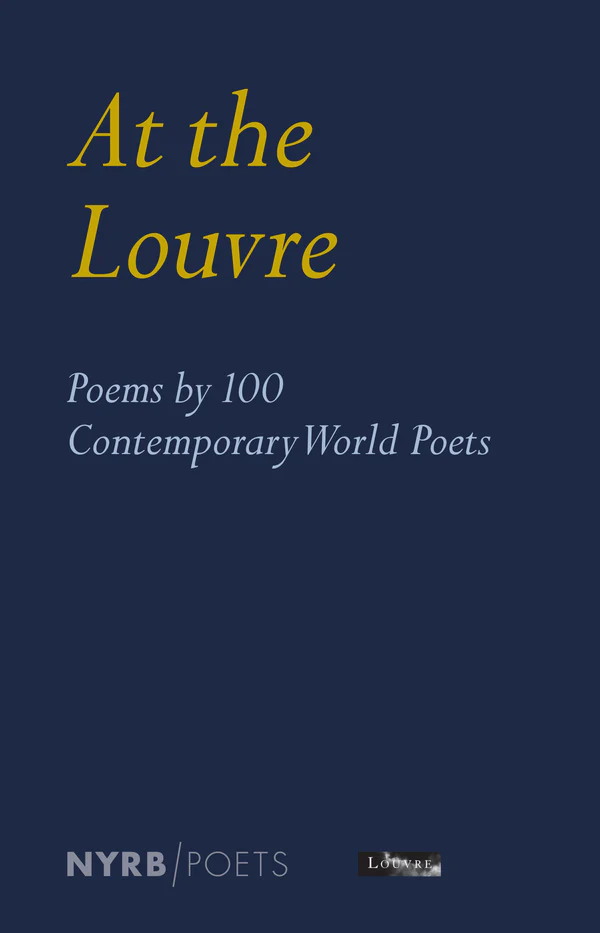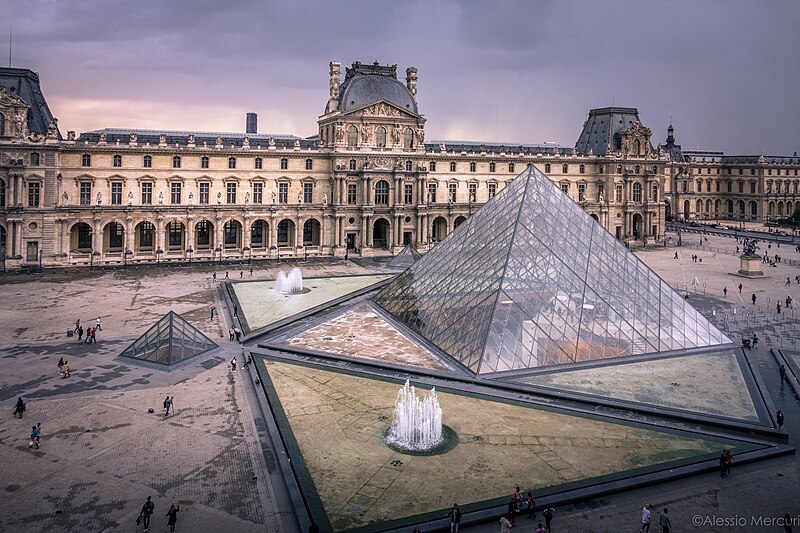
- Free Article: No
- Contents Category: Poetry
- Review Article: Yes
- Article Title: ‘The tom-tom of the spirit’
- Article Subtitle: Contemporary poets head to the Louvre
- Online Only: No
- Custom Highlight Text:
‘Poetry is a speaking picture,’ said Simonides of Keos, and ‘painting a silent poetry’. From ancient Greece until now, these ‘sister arts’ have been frequently conjoined, though it is most often poetry that speaks to or for painting rather than the reverse. We have come to call this interaction ekphrasis (literally, a ‘speaking out’), usually defined as ‘a verbal description of a work of art’. In Classical times it was a school exercise for developing rhetorical skills, but ever since Homer’s elaborate depiction of the shield of Achilles in the Iliad, it has been co-opted by poets, especially during the last century. - Featured Image (400px * 250px):

- Alt Tag (Featured Image): Paul Kane reviews ‘At the Louvre: Poems by 100 contemporary world poets’ edited by Antoine Caro, Edwin Frank, and Donatien Grau
- Book 1 Title: At the Louvre
- Book 1 Subtitle: Poems by 100 contemporary world poets
- Book 1 Biblio: New York Review Books, US$22 pb, 214 pp
- Book 1 Cover Small (400 x 600):

- Book 1 Cover (800 x 1200):

- Book 1 Readings Link: https://www.readings.com.au/product/9781681379012/at-the-louvre-poems-by-100-contemporary-world-poets--louvre-museum--2024--9781681379012#rac:jokjjzr6ly9m
Ekphrastic poems usually engage with either actual works of art or imaginary ones. Thus Auden’s famous ‘Musée des Beaux Arts’ is about a painting attributed to Pieter Bruegel the Elder, while Robert Browning’s equally renowned ‘My Last Duchess’ involves a non-existent portrait. There is a third category, actual works that no longer exist or to which we have no access or which we can’t exactly identify (as in Rilke’s ‘Archaic Torso of Apollo’). Examples of all three types would run into the thousands, as any internet search will quickly attest.
The point is that this is an old and complex tradition that is very much alive and thriving. I suspect that ekphrastic poems have proliferated of late because they are easy to assign to writing students (like the villanelle, a faux-traditional poetic form), but the increasing popularity of art galleries and museums must have something to do with it too. So it doesn’t come as a surprise that the Louvre in Paris has teamed up with New York Review Books to commission 102 poets to write the poems collected in At the Louvre (the subtitle is slightly misleading: there are in fact 102 poems).
Of course, this isn’t the first time a museum has thought to do this. In Australia, for instance, there is Peter Steele’s sumptuous collection of poems based on works in the National Gallery of Victoria, The Whispering Gallery: Art into poetry (2006) and Les Murray’s encounter with the National Gallery of Australia, The Full Dress (2002), both beautifully illustrated. In neither case, however, was the gallery itself a subject, only the works therein. When I participated in an ekphrastic project for the Yale University Art Gallery, none of us thought to write about the building, though it was an early and important work by the architect Louis Kahn. At the Louvre has a very different feel, for you cannot approach this grand Parisian cultural icon without being aware of its literal and historic centrality. Not only is it the largest of the great museums, but it is the most visited. In asking poets from around the world to respond to the Louvre, most of them chose to write about the musée itself rather than about the art works in it. Except perhaps for the Vatican, I can’t think of another major museum where that would be the case. By my count, fifty-five of the poets wrote about the Louvre, while thirty-eight referenced art works (four wrote about imaginary paintings; two composed concrete poems; and three wrote works seemingly unrelated to the project). And what did they all have to say?
 The Louvre, 2017 (photography by Alessio Mercuri via Wikimedia Commons)
The Louvre, 2017 (photography by Alessio Mercuri via Wikimedia Commons)
Take 102 poets from forty-one countries writing in fourteen different languages and you are obviously going to get a heterogeneous mix of styles, sensibilities and approaches. That’s world poetry (if only a slice). However, all of the poems are presented in English; most of the poems are translations (and the majority of those are from French). That’s bound to flatten out some of the more radical features in the poetic terrain (and here I should single out Alex Andriesse, who translated all forty-three of the poems in French into English – a tour de force). Some of the variety you can catch by looking at differing attitudes towards the Louvre. Vivek Narayanan, from India, writes a sonnet which begins ‘The museum is the most beautiful thief’, reminding us of how much loot there is in museums, while Amadou Lamine Sall, from Senegal, composes an unabashed ‘praise poem’, where he proclaims: ‘Paris is beautiful Paris is great Paris is mild Paris is the tom-tom of / the spirit and the Louvre its drunken drummer.’ That is the spectrum, and you get poems all along it. Curiously, the physical feature of the museum most mentioned is I.M. Pei’s glass pyramid, its most modern structure, in the Cour Napoléon. Jean d’Amérique, from Haiti, addresses it directly in ‘The Drunken Pyramid’, where he admonishes us, once inside, to ‘look up, you who enter this symphony of sparks’.
There are many poems about specific works of art, a quarter of which are concerned with ancient Middle Eastern objects, but most are about European painters familiar to us, even if there are a few surprises, such as two poems about Constance Mayer (who slit her throat with the artist Pierre-Paul Prud’hon’s razor) and one about a mummified cat. There is only one poem by an Australian, the Aboriginal poet Ali Cobby Eckermann (riffing off the Mona Lisa), though Sydney poet Chris Andrews has translated three poems from Spanish. American poet Susan Howe has a charming prose poem about going to see Watteau’s Pierrot with an art critic; it ends with: ‘Artists steal. Even poets and comedians must look at their hands at night to see what they have captured from others during the day.’ Nimrod, from Chad, gives a striking account of The Raft of the Medusa by Géricault, who, he says, ‘hoists a Sengalese, a Black, a brawny man, the raw material of all color’. One could go on; suffice to say, there are many poems here to reward the reader. But there are other rewards, too.
Most English-speaking readers of poetry will know only a few of the writers included in this anthology. But that is one of its advantages, for you cannot read these poems without wondering who the people are who wrote them. The editors, alas, have taken a minimalist approach by eschewing contributor notes, so we are on our own. Perhaps their idea was to make us focus on the poems themselves, and yet there is something instructive in seeing the impressive range of countries and individuals represented. In any case, it took several hours to fashion brief biographies of the poets for the purpose of this review, but it was rewarding all the same to thus shift the horizon of one’s ignorance. It was also humbling to get a glimpse of just how many fine poets there are worldwide and how, in coming together in a common project, they demonstrate collectively their rich talents and intriguing distinctness in such a clear and illuminating light. That our English word ‘louvre’ harkens back to the Old French for ‘skylight’ seems perfectly appropriate for this ekphrastic celebration.


Comments powered by CComment